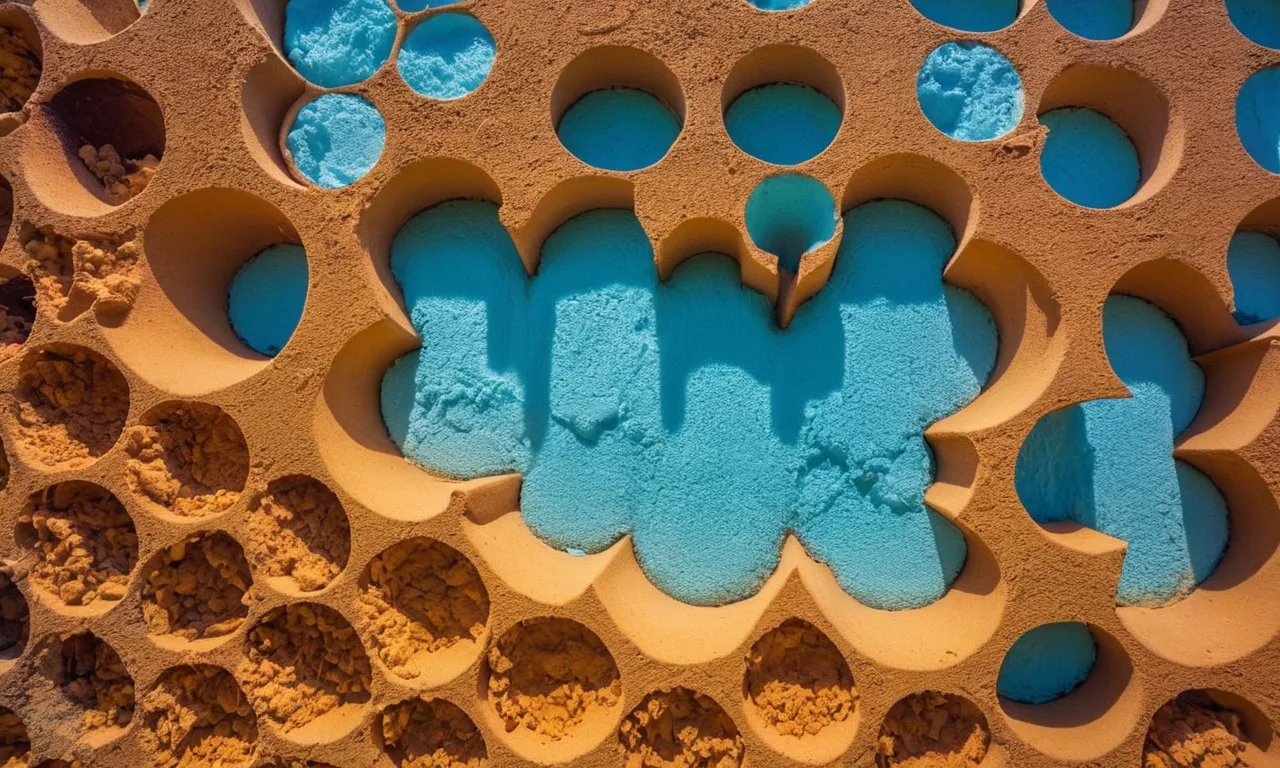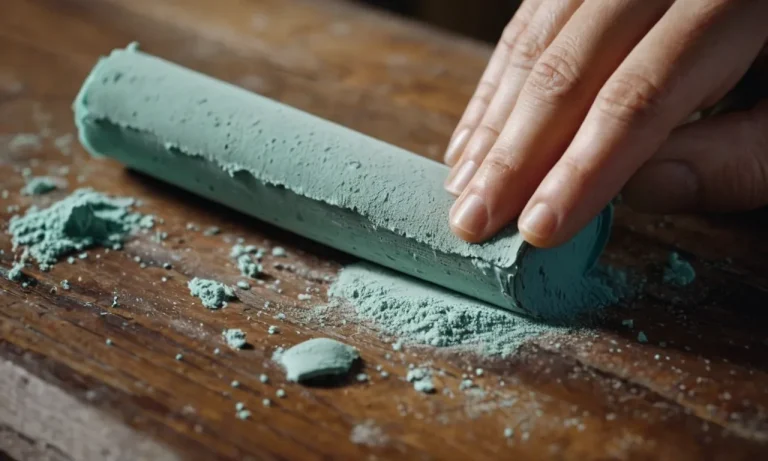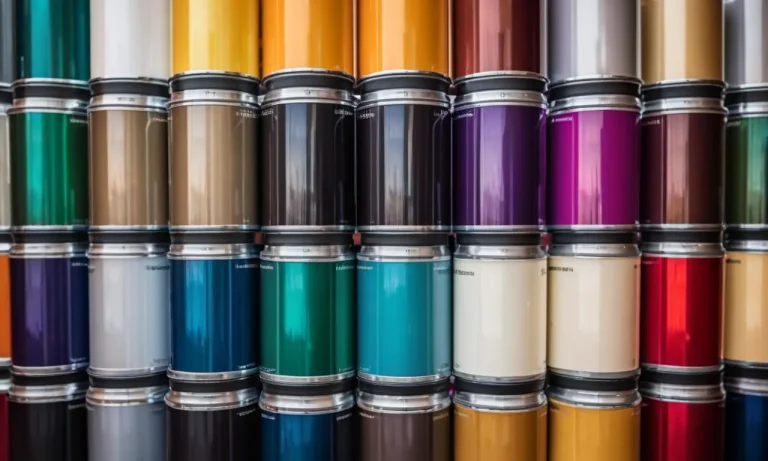Can You Paint Spray Foam Insulation? A Detailed Guide
If you’re looking to update the look of your home’s interior walls or ceiling, you may be wondering: can I paint over spray foam insulation? The short answer is yes, spray foam insulation can be painted over with the proper preparation and paint products.
Painting spray foam allows you to customize the color and finish of your insulation application for a seamless look. In this comprehensive guide, we’ll cover everything you need to know about painting spray foam insulation.
We’ll discuss the benefits and challenges of painting spray foam, the best type of paint to use, how to prepare the foam for painting, application techniques, how to choose a color, and tips for achieving the best results.
We’ll also provide a step-by-step process to ensure your spray foam paint job turns out flawlessly.
Benefits of Painting Spray Foam Insulation
Painting spray foam insulation offers several benefits that go beyond just its insulating properties. Let’s explore some of the advantages:
Improves aesthetics
One of the main benefits of painting spray foam insulation is that it improves the overall aesthetics of your space. The foam insulation can have a rough and unfinished appearance, but by painting it, you can easily transform it into a visually appealing surface.
Whether you choose a neutral color to blend in with the surroundings or a bold color to make a statement, painting the insulation allows you to customize the look and feel of your space.
Creates a uniform look
Painting spray foam insulation also helps create a uniform look throughout your space. Without painting, the insulation may appear patchy and uneven, especially if there are areas where the foam has expanded more than others.
By applying a coat of paint, you can create a smooth and consistent surface that seamlessly blends with the rest of your walls or ceiling. This uniform look adds to the overall aesthetic appeal of the space.
Allows color customization
Another advantage of painting spray foam insulation is the ability to customize the color to match your personal preferences or the overall design scheme of your space. Whether you want to create a vibrant accent wall or a subtle backdrop, painting the insulation gives you the flexibility to choose any color you desire.
This allows you to create a cohesive and visually appealing environment that reflects your style and taste.
Remember, before painting spray foam insulation, it’s essential to ensure that it is properly cured and has fully hardened. This will ensure that the paint adheres well and provides the desired finish.
If you’re unsure about the process or have any concerns, it’s always best to consult with a professional insulation contractor.
For more information on painting spray foam insulation and other insulation-related topics, you can visit www.energystar.gov or www.sprayfoam.com.
Challenges of Painting Spray Foam
Surface texture
One of the challenges of painting spray foam insulation is its unique surface texture. Spray foam is typically applied in a thick, uneven layer, which can make it difficult for paint to adhere properly.
The foam’s uneven surface can cause the paint to appear blotchy or uneven, resulting in an unsightly finish. To overcome this challenge, it is recommended to apply a primer before painting to create a smoother surface for the paint to adhere to.
Overspray
Another challenge when painting spray foam insulation is overspray. When using a paint sprayer, there is a risk of overspray, which can lead to paint particles settling on surrounding surfaces. This can be especially problematic if the spray foam insulation is installed in a finished area, such as a room with furniture or flooring.
To minimize overspray, it is important to use proper masking and protective measures, such as covering nearby surfaces with plastic sheets or drop cloths.
Moisture exposure
Spray foam insulation is known for its excellent moisture resistance properties. However, when it comes to painting, moisture exposure can be a challenge. If moisture gets trapped between the spray foam and the paint, it can cause the paint to bubble, peel, or deteriorate over time.
It is essential to ensure that the spray foam insulation is completely dry before applying any paint. Additionally, using a paint specifically designed for moisture-prone areas can help mitigate this challenge.
Choosing the right paint
Choosing the right paint for spray foam insulation is crucial to ensure a successful and long-lasting finish. Not all paint types are suitable for use on spray foam. It is recommended to use a paint that is flexible and can expand and contract with the foam to prevent cracking or peeling.
Acrylic latex paints are commonly used for painting spray foam insulation due to their flexibility and durability. It is also important to consider the color and sheen of the paint, as darker colors can absorb more heat and potentially affect the performance of the spray foam insulation.
For more detailed information on painting spray foam insulation, you can visit the Spray Foam Magazine website, which provides valuable insights and resources on the subject.
Best Type of Paint for Spray Foam
When it comes to painting spray foam insulation, it’s important to choose the right type of paint that will adhere properly and provide long-lasting results. Here are three popular options:
Latex paint
Latex paint is a versatile and commonly used option for painting spray foam insulation. It is water-based and offers a quick-drying time, making it convenient for both indoor and outdoor applications. Latex paint also comes in a wide variety of colors, allowing you to achieve the desired aesthetic for your space.
Additionally, it is known for its durability and resistance to cracking or peeling over time.
Elastomeric paint
Elastomeric paint is a flexible and durable choice for painting spray foam insulation. It is designed to expand and contract with the substrate, making it ideal for areas that experience temperature fluctuations.
Elastomeric paint provides excellent waterproofing properties, protecting your spray foam insulation from moisture damage. It also offers good resistance to UV rays, preventing color fading and maintaining the appearance of your insulation over time.
Epoxy paint
Epoxy paint is a strong and durable option for painting spray foam insulation. It provides a high-gloss finish and is resistant to chemicals, making it suitable for areas that may be exposed to harsh substances.
Additionally, epoxy paint offers excellent adhesion, ensuring that it bonds well with the spray foam insulation surface. However, it’s important to note that epoxy paint typically requires a primer, so proper surface preparation is necessary for optimal results.
Ultimately, the best type of paint for your spray foam insulation will depend on your specific needs and preferences. Consider factors such as the intended use of the space, exposure to external elements, and desired aesthetic when choosing the right paint.
It’s always a good idea to consult with a professional or refer to the manufacturer’s recommendations for the most suitable paint options for your spray foam insulation.
Preparing Spray Foam for Painting
Before painting spray foam insulation, it is crucial to properly prepare the surface. This will ensure a smooth and long-lasting finish. Here are some important steps to follow:
Allow foam to fully cure
After applying spray foam insulation, it needs time to cure and harden. This process typically takes around 24 hours, but it is important to check the manufacturer’s instructions for specific curing times. Painting before the foam is fully cured can result in an uneven finish and poor adhesion.
So be patient and allow the foam to fully cure before moving on to the next step.
Clean and prep the surface
Prior to painting, it is essential to clean the surface of the spray foam insulation. Use a mild detergent and water solution to remove any dirt, dust, or oils that may have accumulated. This will ensure proper adhesion of the paint.
Rinse the surface thoroughly and allow it to dry completely before proceeding.
Sand rough areas
If there are any rough or uneven areas on the spray foam surface, it is recommended to sand them down. This will create a smoother surface for the paint to adhere to. Use a fine-grit sandpaper and gently sand the rough areas until they are smooth.
Wipe away any dust or debris with a clean cloth before proceeding.
Apply primer
Before applying the paint, it is advisable to use a primer specifically designed for spray foam insulation. Primer helps to seal the surface and provides a better base for the paint to adhere to. It also helps to prevent the foam from absorbing too much paint, resulting in a more even finish.
Follow the manufacturer’s instructions for proper application of the primer.
By following these steps, you can ensure that your spray foam insulation is properly prepared for painting. Remember to read and follow the instructions provided by the manufacturer of the spray foam insulation and any paint or primer products you plan to use.
Paint Application Tips and Techniques
When it comes to painting spray foam insulation, following the right techniques can make a significant difference in the final result. Here are some tips to ensure a successful paint application:
Use proper paint sprayer
Using the right paint sprayer is crucial for achieving a smooth and even finish on your spray foam insulation. It is recommended to use an airless paint sprayer with a pressure rating of at least 2,000 psi.
This type of sprayer provides sufficient pressure to atomize the paint properly and ensures an even distribution on the surface.
Apply in thin, even coats
When applying paint to spray foam insulation, it is important to avoid thick coats that can lead to uneven drying and potential cracking. Instead, apply the paint in thin, even coats. This allows for better adhesion and a more uniform finish.
Start with a light coat and gradually build up the layers as needed.
Allow proper drying time between coats
Allowing sufficient drying time between coats is essential for a professional-looking result. The drying time can vary depending on the type of paint and environmental conditions. It is recommended to follow the manufacturer’s instructions for the specific paint you are using.
Generally, waiting at least 24 hours between coats is a good practice to ensure proper adhesion and prevent issues such as peeling or bubbling.
Watch for drips and runs
While applying paint, it is important to keep an eye out for drips and runs. These can occur if too much paint is applied in one area or if the paint is not properly atomized by the sprayer. If you notice any drips or runs, immediately smooth them out with a brush or roller to prevent them from drying and leaving visible marks on the surface.
By following these paint application tips and techniques, you can achieve a professional and long-lasting finish on your spray foam insulation. Remember to always prioritize safety and follow the manufacturer’s instructions for both the spray foam insulation and the paint you are using.
Choosing a Color for Spray Foam
When it comes to painting spray foam insulation, choosing the right color is an important step in achieving the desired aesthetic for your space. Here are some tips to help you select the perfect color:
Opt for lighter colors
Lighter colors are generally recommended for spray foam insulation. This is because lighter shades can help reflect more natural light, making the room appear brighter and more spacious. Additionally, light colors can give a sense of cleanliness and freshness to the space.
So, when choosing a color for your spray foam insulation, consider opting for shades like whites, creams, pastels, or light neutrals.
Consider the room’s size and lighting
The size of the room and its lighting conditions should also be taken into account when selecting a color for spray foam insulation. If you have a small room with limited natural light, choosing a lighter color can make it feel more open and airy.
On the other hand, if you have a larger room with ample natural light, you have more flexibility to experiment with both light and darker shades.
Test swatches first
Before committing to a specific color for your spray foam insulation, it’s always a good idea to test swatches on a small area of the wall. This will allow you to see how the color looks in the actual lighting conditions of the room and how it complements the other elements of the space.
It’s also important to note that the color of the spray foam insulation may appear slightly different once it has been painted, so testing swatches will give you a better idea of the final result.
Remember, the color you choose for your spray foam insulation can have a significant impact on the overall look and feel of the room. Take the time to consider your options, test swatches, and select a color that aligns with your aesthetic preferences and the specific characteristics of the space.
Achieving the Best Paint Results
When it comes to painting spray foam insulation, following the right steps can make all the difference in achieving the best results. Here are some key points to consider:
Follow all preparation steps
Before you begin painting, it’s crucial to prepare the surface properly. Start by cleaning the spray foam insulation thoroughly to remove any dust, dirt, or debris. Use a mild detergent and water solution, and make sure to rinse it off completely.
Allow the surface to dry completely before moving on to the next step. This will ensure that the paint adheres properly and provides a smooth finish.
Use high-quality primer and paint
Using a high-quality primer specifically designed for spray foam insulation is essential. The primer will create a smooth and even surface for the paint to adhere to. It will also help prevent any discoloration or bleeding through of the insulation material.
Once the primer is dry, choose a high-quality paint that is suitable for the type of insulation you have. Consult the manufacturer’s recommendations or consult a professional to ensure you select the right paint product.
Apply enough coats for full coverage
Applying multiple coats of paint is important to achieve full coverage and a professional-looking finish. The number of coats required will depend on the color you choose, the type of insulation, and the desired opacity.
Typically, two to three coats are sufficient, but it’s always a good idea to follow the paint manufacturer’s recommendations. Take your time and apply each coat evenly, allowing sufficient drying time between coats.
Allow for proper curing and drying
After you have finished painting, it’s crucial to allow for proper curing and drying time. This will ensure that the paint sets properly and provides long-lasting results. Follow the manufacturer’s recommendations for drying time, which can vary depending on the type of paint and environmental conditions.
Avoid touching or applying any pressure on the painted surface until it is completely dry to prevent any smudging or damage.
By following these steps and using the right materials, you can achieve a professional and lasting paint finish on your spray foam insulation. Remember to always consult the manufacturer’s recommendations and seek professional advice if needed.
Conclusion
Painting over spray foam insulation allows you to customize its appearance while retaining its insulating properties. With the right prep work, paint products, and application techniques, you can achieve a smooth, seamless look in any color you desire.
Just be sure to follow the recommendations outlined here regarding paint type, surface preparation, application methods, and curing times. With some careful planning and diligent work, your painted spray foam will provide visual appeal along with reliable thermal performance.







